
Using AI to Enhance Sustainability in Architecture and Urban Design
By Sameedha Mahajan
Using AI to Enhance Sustainability in Architecture and Urban Design
By Sameedha Mahajan
Architect and Urban Designer
Pittsburgh, Pennsylvania, USA
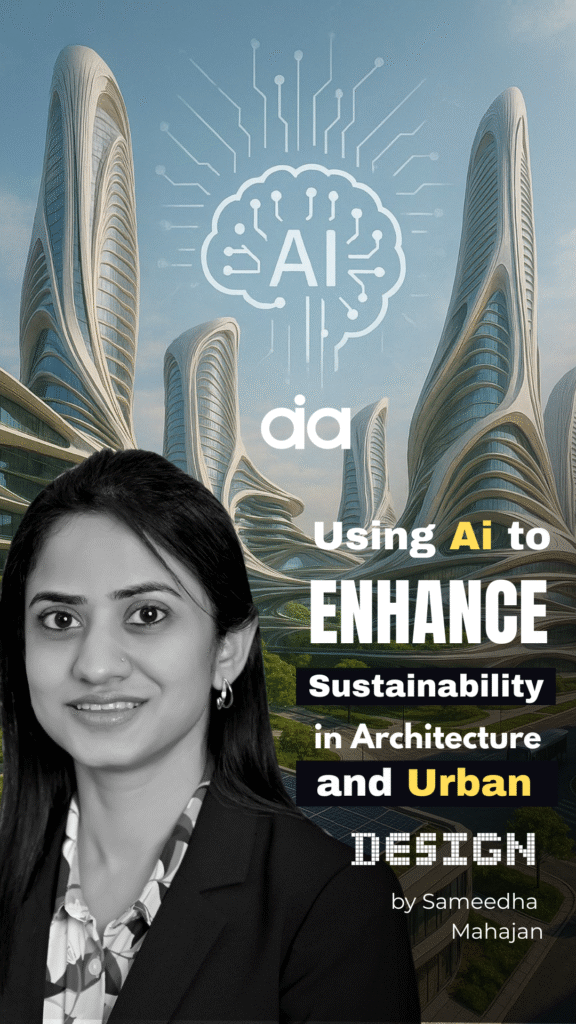
The practice of architecture has come a long way, from hand-drawn sketches and calculations to adopting AI as an integrated part of the practice. From helping ease the drawing process to creating 3D models, generating multiple design options, and giving virtual reality experiences of spaces, AI has seeped into all phases of the industry. Since architecture has always been the pursuit of creative problem-solving while enhancing the human experience, using AI to enable architects to deal with the ongoing climate crisis is only natural. AI tools are transforming architecture and urban design by offering innovative solutions to complex challenges and can be implemented to design smarter, more sustainable environments.
Energy Modeling and Predictive analytics for sustainability
With the increasing emphasis on sustainable design, it is essential to incorporate green strategies and energy analysis into design from the early stages. There are now a number of AI-based energy modeling software that allow architects to predict a building’s energy use by analyzing climate, material properties, design configurations, and overall carbon footprint. Having this information early on can help designers tweak their design to create the best possible configuration for their projects. Making efficient choices about design orientation and material selection at the onset helps architects make use of the site optimally and choose materials with lower embodied carbon, thus assuring better environmental impact over a building’s life cycle. Making environmentally conscious decisions early on ensures that designs eventually meet energy guidelines and sustainability regulations easily.
Some specific tools that are widely being adopted to predict energy efficiency in architecture and urban design include Autodesk Insight, EnergyPlus, and Sefaira (Trimble) amongst several others. Autodesk Insight can be easily integrated with Autodesk Revit, making it a popular option for the increasing number of Revit and BIM users in the industry. Sefaira (Trimble) can be used in conjunction with SketchUp and Revit, and helps simulate heating, cooling, lighting, and ventilation loads. Plugins like Ladybug and Honeybee for Grasshopper and Rhino are very useful in climate-responsive design, making them valuable software for India’s diverse climate zones.
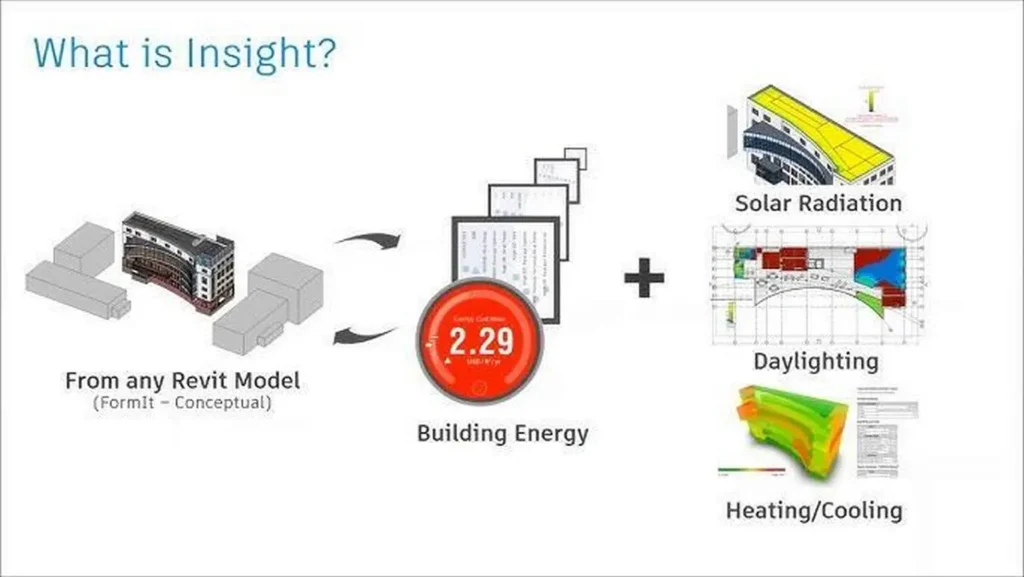
Urban Planning and Smart City Development
The UN estimates that by 2030, more than 60% of the world’s population will live in urban areas. As urban planners grapple with the issue of housing this population, its impact on infrastructure cannot be ignored. AI plays a crucial role in making urban mobility more efficient and sustainable. Using tools like UrabnFootprint, TransCAD, Sidewalk Labs, MATSim (Multi-Agent Transport Simulation), amongst several others, in conjunction with GIS, can help planners analyze traffic flow patterns, vehicle density, peak traffic times, and public transportation usage and access. AI tools can help create design options that reduce road congestion and emissions from idling vehicles and prioritize public transportation and pedestrian infrastructure.
Environmental monitoring of air quality, noise pollution, and temperature allows planners to identify areas requiring green spaces, monitor pollution sources, and establish policies for healthier cities. AI is now being used to help planners determine the optimal zoning layout for cities in a way that minimizes environmental impact and maximizes access to resources. Underutilized areas in cities can be rezoned for appropriate mixed-use developments, allowing for social and ecological prosperity. Cities like Singapore, Toronto and Barcelona use AI tools to develop carbon-neutral neighbourhoods, manage traffic and waste, and optimize water, all of which help reduce a city’s overall carbon impact.
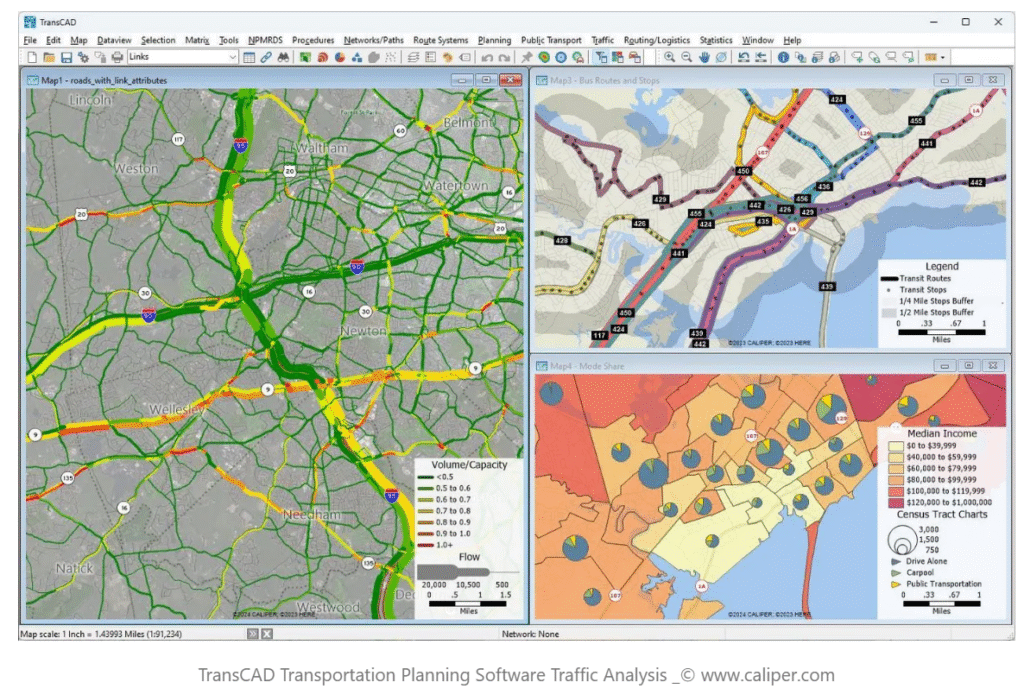
AI-driven Building Management Systems
BMS (Building Management Systems) in architecture have gained popularity over the past decade and making them ‘smart’ and sustainable is the new goal. AI-driven BMS helps control lighting, heating, and ventilation dynamically based on occupancy data and user patterns. This data analysis is particularly valuable in large commercial and institutional complexes where energy use extensively impacts cost and sustainability. By integrating data from IoT sensors, AI systems can help monitor energy inefficiencies and alert architects about maintenance needs and any weak links.
For example, programs like Johnson Controls OpenBlue focus on HVAC control, security, fire safety and asset management. It helps focus on maintaining optimal indoor air quality by controlling ventilation and filtration. Other programs like Honeywell Forge, and Siemens Desigo CC, help predict and shift energy consumption patterns to help reduce peak load demands and energy usage costs. These systems are also capable of tracking the wear and tear of critical building elements allowing advanced repair and management.
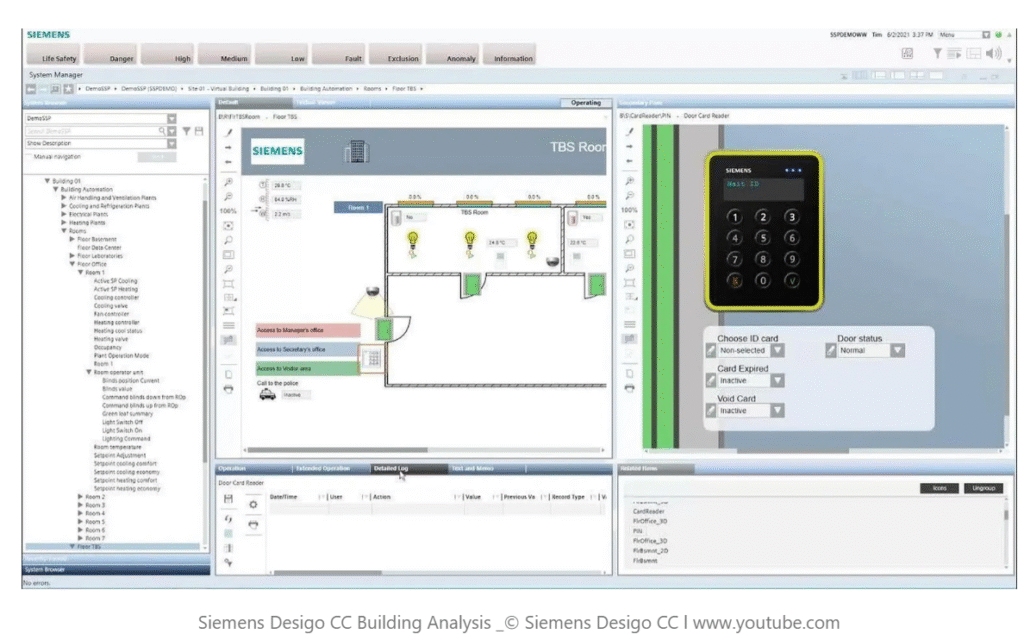
Case Study – Googleplex
Google’s Mountain View Campus, also known as the Googleplex is an excellent example of innovative BMS to enhance sustainability. Using AI-enhanced BMS monitors to adjust HVAC systems, lighting and other building systems helps reduce energy consumption by optimizing operations based on occupancy, weather and energy needs while improving indoor air quality and comfort. The solar panels generate a significant amount of the campus’s energy needs and excess solar power generated is stored using battery storage systems. This excess energy is then deployed during higher demand times or nighttime. Using a system of sensors that adjust indoor lighting levels automatically depending on the sunlight and occupancy levels, the campus reduces unnecessary lighting use. Using AI-based inventory management, the campus is working on reducing their food and water waste. The future energy demand and response are predicted by linking the BMS to Google’s DeepMind AI. This collaboration has achieved close to 40% savings in cooling energy, helping Google stay on track with its carbon reduction targets.
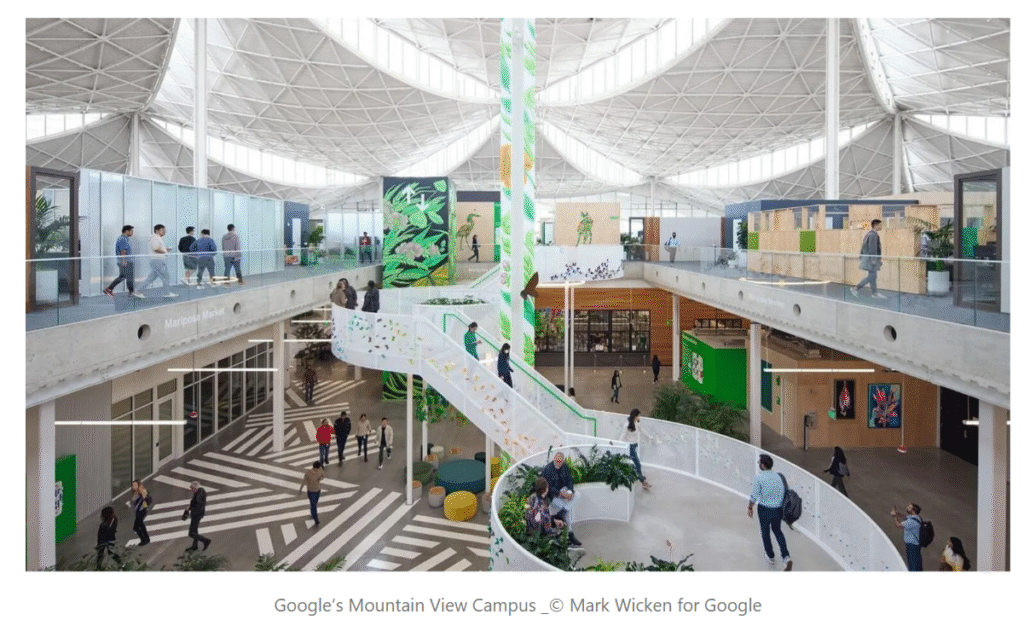
Public Safety
Rising sea levels and climate crisis are increasingly affecting all parts of the world. While it is unfortunate to deal with the effects of natural disasters, we are fortunate that AI algorithms can help predict disasters and their impacts to some level in the least. AI tools can help architects test their designs in a simulated environment at varying degrees of impact. This helps greatly in designing disaster-resilient structures and an overall disaster management approach. In dense urban scenarios, AI models like UrbanFlow, One Concern, ArcGIS, and others can help model and plan the most effective evacuation scenarios and optimize routes to handle emergencies efficiently. Tools like ZenCity and Nextdoor help planners monitor public sentiments, social media data, and emergency calls to gauge public reaction to different situations and implement better ongoing crisis communication, thus increasing public safety.
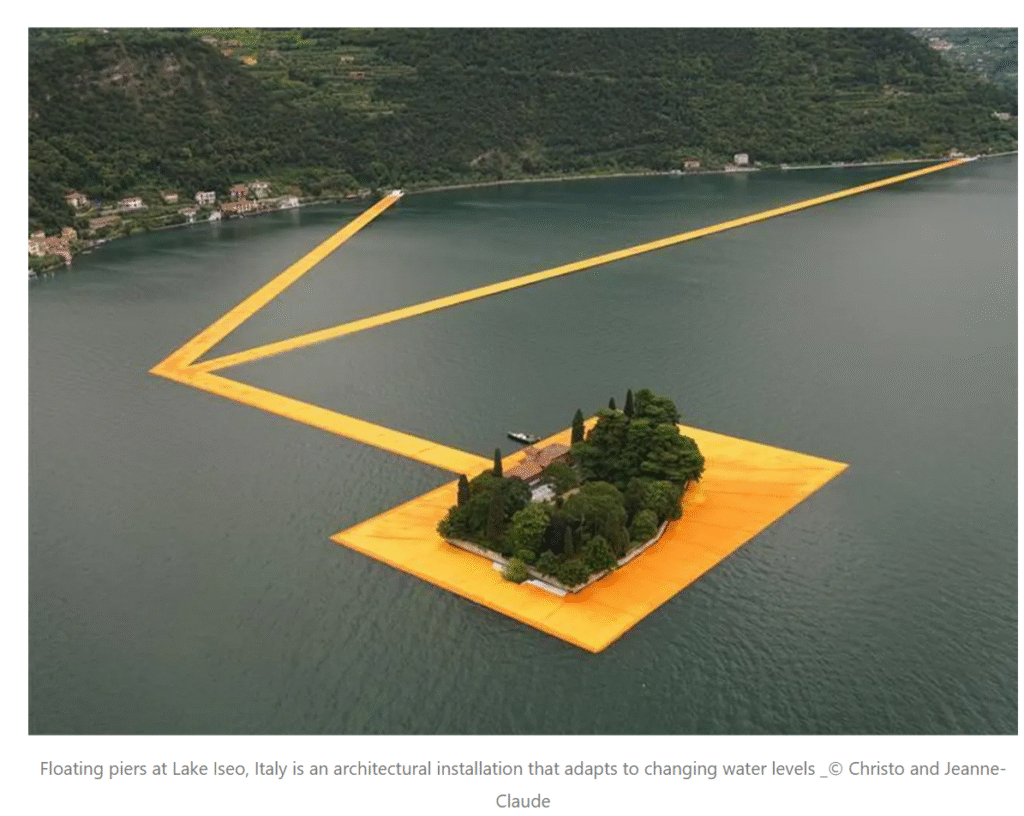
Conclusion
AI and technological advancement have provided us with powerful tools for ensuring energy-efficient designs. However, the intent and execution are entirely up to us. AI has made it easier to analyze patterns and come up with multiple design solutions to choose from. However, over-reliance on AI comes with its challenges. Concerns about data privacy, algorithmic biases, and resource disparities (especially in developing countries like India) make it tricky to rely completely on technology. Ethical use of AI-collected data sparks huge debates time and again. Additionally, in many cases, AI-driven solutions may not always be economically feasible and need to be made more affordable and accessible to prevent deepening inequalities within cities of differing resource levels. Despite these challenges, the potential to make use of AI is tremendous. Careful integration of AI-driven solutions in architecture and urban design can result in healthier, more resilient, and energy-efficient spaces that support the future.
References:
- United Nations : Information Service Vienna (2017) – UN Report Says World Urban Population of 3 Billion Today Expected to Reach 5 Billion by 2030
- Critical Sustainabilities (2013) – Googleplex
- Lucas, S. (2024) – How to design sustainable buildings with AI, Future Architecture
- Frew, S. (2023) – 15 Top AI Tools for Architects and Designers, Architizer Journal
- Andrew (2024) – How AI Helps Build More Sustainable Structures, Kreo.net
